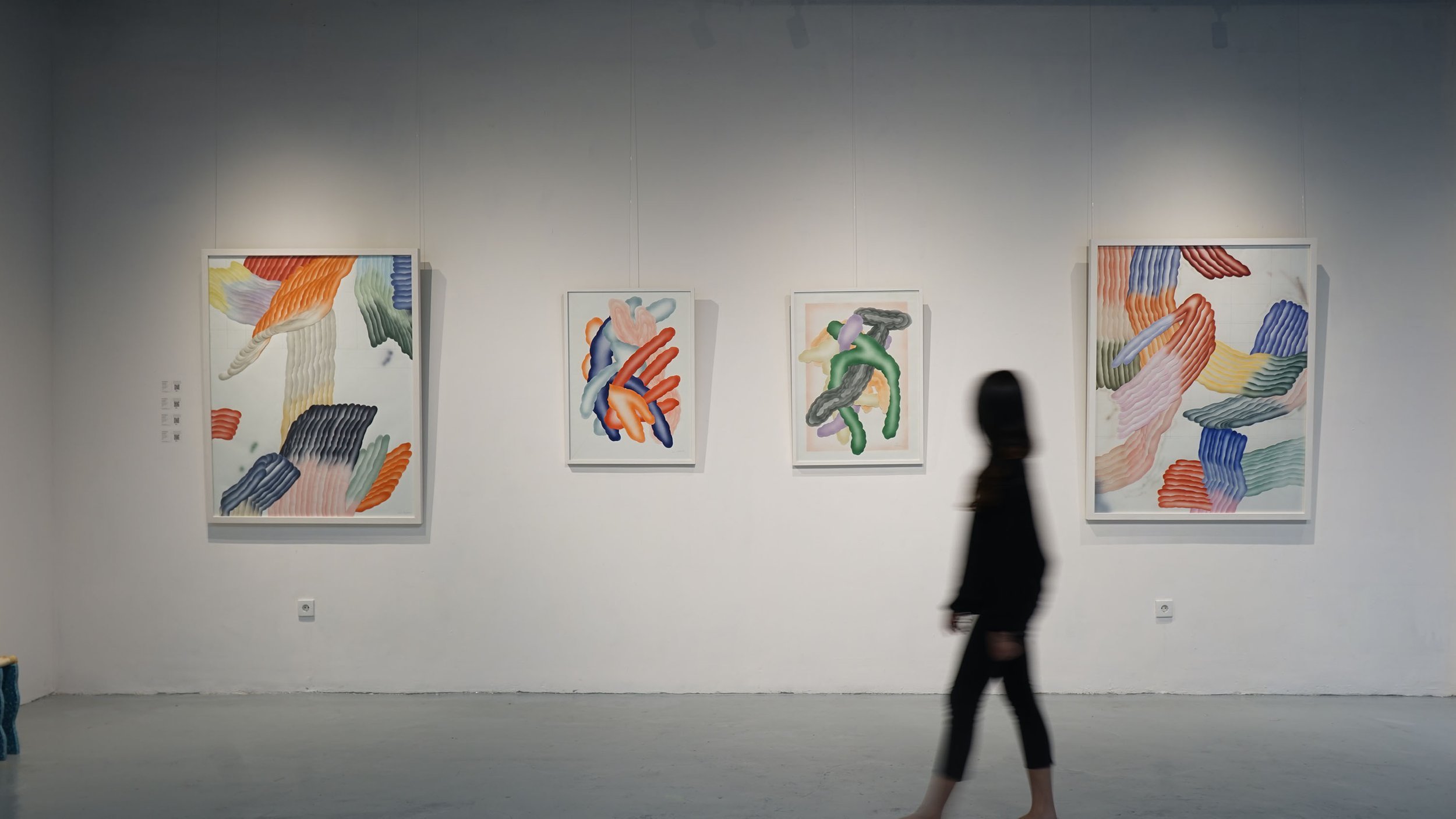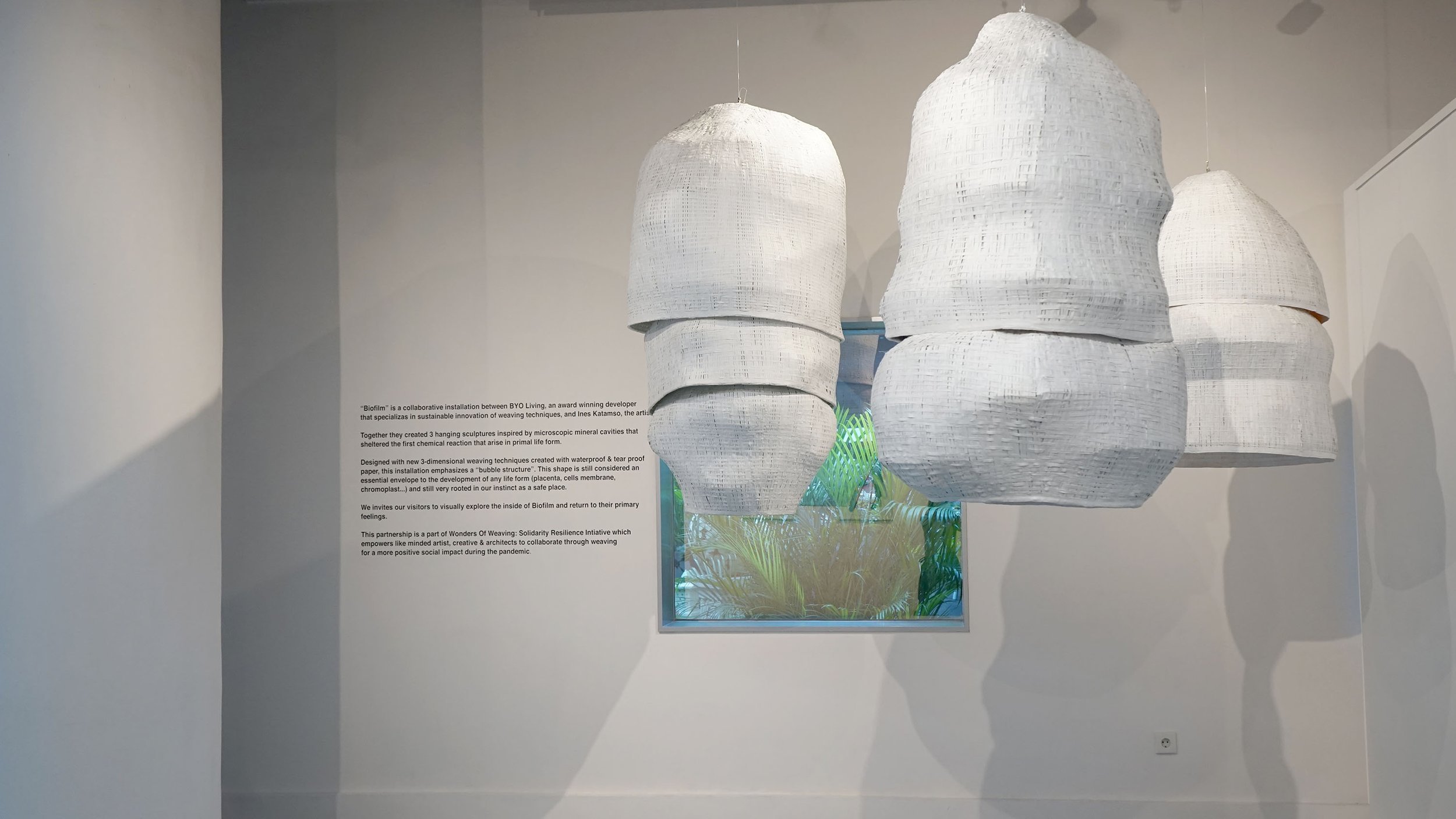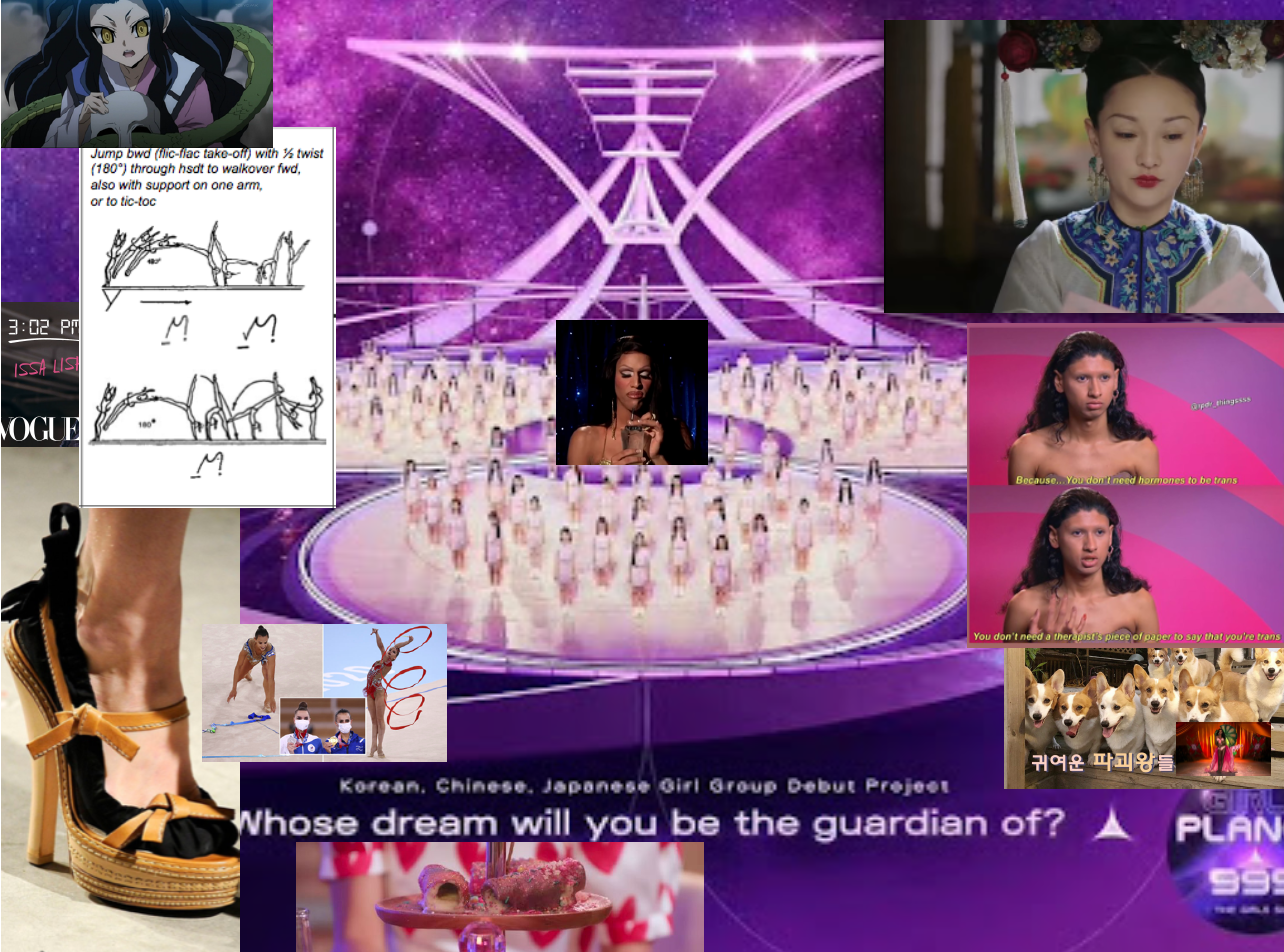Fresh Faces: Ines Katamso
Biomimicry as an artform
By Alana Malika
A&M's Fresh Faces is where we profile an emerging artist from the region every month and speak to them about how they kick-started their career, how they continue to sustain their practice and what drives them as artists. Read our profile on French-Indonesian artist Ines Katamso here.
Ines Katamso. Photographed by Sharon Angelia.
You have a degree in Textile Design. When did you start presenting work in a fine art/gallery context?
Three years ago, Dia.lo.gue gallery in Jakarta offered me a spot in an all-female group exhibition ‘Self Explanatory’. I was surprised by their proposal as I had not done any personal painting at the time, but they convinced me to take the challenge. Now that I have dedicated my career to fine art, I am grateful for that first opportunity.
Textiles and fashion are still part of my process. I handstitch my paper cut together, I use sewing patterns, deconstruct and construct shapes together… handcrafting is engraved into my creative mindset.
Exhibition view of ‘It Happened’. Image courtesy of Ines Katamso.
Could you share how you have maintained your practice after graduation? What are the important factors that have kept you going?
I grew up surrounded by creativity, so it's genetically rooted in me. I am constantly finding beauty and inspiration in a lot of little things in my daily life and my practice never quits me. I always have in mind my next artwork, next artistic project, next concept. It is natural and somehow vital.
How did the opportunity for your first solo exhibition, ‘It Happened’ at ISA Art and Design, come about?
Deborah Iskandar, the principal at ISA Art and Design, supported me since the beginning of my fine art career so it was natural for us to make my first solo show together, and I am lucky to exhibit my work in a spacious gallery.
Ines Katamso, ‘Coalesced 1’, 2021, non-toxic ink on 300 gsm paper (acid free & mold resistant), organic painting on wooden frame, 128 x 98.3cm. Image courtesy of Ines Katamso.
Ines Katamso, ‘Replicated 4’, 2021, non-toxic ink on 300 gsm paper (acid free & mold resistant), organic painting on wooden frame, 145 x 115cm. Image courtesy of Ines Katamso.
What was the process like preparing for it?
My work in general combines the "pragmatism of the sciences" with the "emotion of art" but each exhibition is composed around a specific topic. My last exhibition with Ruci Gallery was about bacteria morphogenesis and this solo show is about the abiogenesis theory. I do a lot of scientific research through books, articles, notes and sketches before starting to paint.
‘It Happened’ takes inspiration from microbiology and abiogenesis theory. Could you talk more about this?
There are many theories about the origin of life but I subscribe to the abiogenesis theory. To summarise, the theory states that life appeared in the deep ocean on hydrothermal vents. By chance, molecules became trapped in the porous mineral surface and started to merge together to create the first RNA, cells, bacteria and to progressively more complex living things. Life has emerged from three main chemical reactions: synthesis, self-replication and self-interaction. I started to wonder, if I apply these three processes into my practice, what will emerge from my creations?
“Life has emerged from three main chemical reactions: synthesis, self-replication and self-interaction. I started to wonder, if I apply these three processes into my practice, what will emerge from my creations?”
Sustainability is part of your art journey, how do you translate it?
When I started to paint, I used oil painting which requires a toxic medium and solvent. Since I developed my interest into the notion of “Life” through my artworks, it was logical for me to use sustainable techniques and mediums. After many months of research, I felt comfortable using simple paper and non-toxic ink. The wooden frames are painted with home cooked flour organic paint and I recently developed a recycled plastic frame range. Right now, I create my own painting from crushed mineral rocks to make pigment.
‘Savyavasa’, commissioned work by Atelier Seni.
Besides painting, you are also a muralist and founder of an interior design studio called Atelier Seni. How did your interest in surface design develop as you continue to expand your creative practice?
Atelier Seni is the design side of my practice and I like to jump between the two disciplines to reach a balance. Too much art can be overwhelming…
Who has been a mentor or an important artistic influence? And why?
At art school, I admired modern artists such as Francis Bacon, Louise Bourgeois or Marth Rothko, and their influence has remained with me in my career so far. However, I do not think the art world is my main influence. I am more touched by scientific fields such as microbiology or astrophysics. I recently developed an artistic crush on Hicham Berrada works. I get hypnotised by his poetic, chemical creations.
Ines Katamso, ‘Intertwined 2’, 2021, non-toxic ink on 300 gsm paper (acid free & mould resistant ), organic painting on wooden frame, 130 x 91.5cm. Image courtesy of Ines Katamso.
What was one important piece of advice you were given?
I remind myself this every time I create a piece : trust yourself and your feelings. It does not matter what people say about your production. Do not fear their words, just follow your instinct.
Could you share your favorite art space or gallery in your country? Why are you drawn to that space and what does it offer to you/ your practice?
I like to visit Museum MACAN in Jakarta. It is a contemporary space where they exhibit local and international artists. Hopefully one day I will have the opportunity to be part of their programme, which would be an honour. I also recently discovered an intimate cultural space called Omah Budoyo in Yogyakarta where traditional Javanese culture meets contemporary art.
Exhibition view of ‘It Happened’. Image courtesy of Ines Katamso.
What are your hopes for your own local art scene, and regionally as well?
I wish there were more public design and art schools in Indonesia to reveal and support young talents. Also, it would be great if the Indonesian government involved more time and budget to develop and promote our contemporary art scene.
Do you have any upcoming exhibitions/projects?
I spent the last seven months preparing this solo show, so now I am taking some time off to embrace new inspiration while also delving into new scientific research. I am actually in France to refresh my mind before taking the next steps.




















